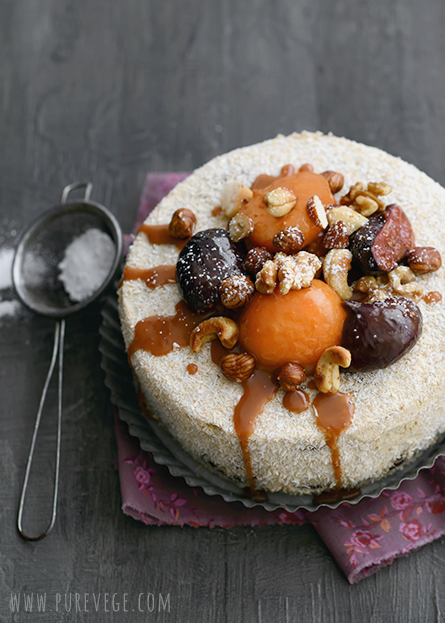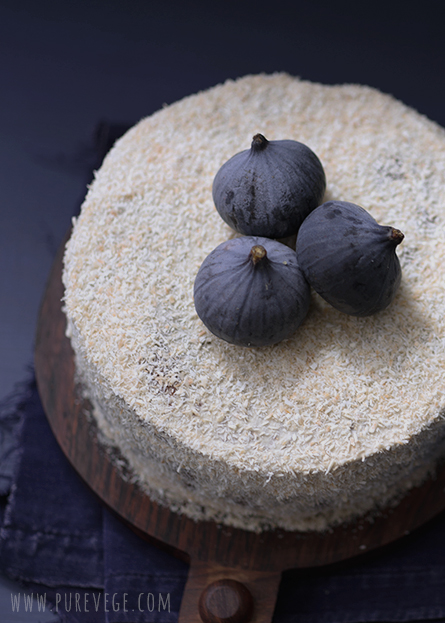Those who follow a discipline, sadhana, designed to realize one’s ideal in the bhakti-tradition, observe a fast from grains, pulses and certain spices every eleventh day of the bright and dark fortnight of the moon. Ekadasi tithi is the day of Sri Vishnu and stands for an intensified spiritual practice. Sadhus or saintly persons of higher order often uptake a voluntary vow, vrata, beginning at the dawn of the preceding day and ending in the sunset of the day following ekadasi, during which they minimize bodily demands in favor of enlightenment. The commitment advocates increased devotional activities like meditation; studying Srimad Bhagavatam, Mahabharata, Ramayana and other Puranas aiming at redeeming the perception of life; and singing lyrical expressions of love for the Divine, kirtan or bhajan, throughout the ekadasi night. Devotees sometimes make a bold statement of mauna, a promise of silence, by avoiding idle and unbeneficial words.


Many of today’s sadhakas or sadhu-aspirants live and work in the secular society that rarely accepts or endorses the interests of a modern yogi. We lack the luxury of taking three days off every few weeks to carry out self-control of such precision, but constantly balance our lifestyle and worldly obligations without compromising the goal. Thankfully, ekadasi is auspicious whether performed elaborately or simply. In fact, it is said to be fortunate even if adhered to unknowingly or accidentally by abstaining from grains.


The origin of ekadasi is discussed by the sages Vedavyasa and Jaimini in Padma Purana. If you are not familiar with the puranic literature, note that it approaches the philosophical themes of Upanishads from a personal point of view, depicting them as a part of interaction and relationships, rather than intellectual enigmas. This story, like many others, is a classic account of good and evil, personified by a beautiful goddess, Sri Ekadasi, whom Sri Vishnu manifested, out of compassion, to relieve the suffering of those who violate the laws of nature and fall in the hands of the embodiment of sin, Papa-purusha.
Left invalidated and unemployed because of Sri Ekadasi’s blessings upon the wrongdoers, Papa-purusha sobbingly begged Sri Vishnu to restore his control over those who are apt to negative karma. Being fair to all creatures, Sri Vishnu permitted him to enter food every eleventh phase of the waxing and waning moon, on ekadasi tithi, and instill destructive sensual desires in whoever eats grains on those days. It is said that all disharmony and imbalance of the material world take refuge in rice, wheat, corn, beans, peas, mustard seeds and other heavy foods on ekadasi.
Bhakti-yogis are not driven by the fear of karmic implications per se but see ekadasi as an opportunity to come closer to the Transcendence. Fasting pacifies the connective line between the tongue, belly and genitals, and helps the body to respite from dietary irregularities while releasing energy to subtle, conscious processes that nourish the soul’s thirst and hunger for self-realization. When the moon is quarterly full or dark, it gravitates very mildly and its rays sooth the nerves and feelings of the heart; when the mental tides are calm, it is easier to contemplate.

Cakes may not typically be on the menu during the fasting days but sometimes the situation calls for a sweet treat. Being gluten-free, the recipe serves guests with sensitivity to wheat on any occasion.
I have used milk-powder that has 26 % fat. I can’t confirm whether any other type of milk-powder will yield as good result. Be aware that the cake becomes dry if over-baked; keep it in the oven only as long as it takes to become firm. The exact duration depends on the height and width of the form. A regular 25 cm / 10” tin cooks in 170 C / 338 F for 30 to 40 minutes; cupcakes are ready much quicker. Insert a toothpick to determine a proper consistency. If you want to make a layered cake, it may be a good idea to bake each layer separately.
Due to the content of potato starch, this cake is delicate and somewhat sand-like. It is best eaten soon after baking.
Terry, if you are reading this: I will take up the subject of coping with a loss in another post soon. Thank you again for suggesting it.

I never thought about Ekadasi ever in my life. I always thought it's followed by Hindu widows as my Maa never followed it. Thanks for enlightening me.
ReplyDeleteEkadashi is followed by millions of Vishnu or Krishna-bhaktas of all ages, varnas and ashrams throughout the world, not only in India. The details may vary according to different lines of discipline but the general idea of pleasing the Lord is common to them all.
DeleteHi Lakshmi,
DeleteI am a silent follower of your blog. Love every bit of it and wish to become a beautiful blogger like you one day. I love how crisp your style is and also how beautifully you write. I am learning my own culture from your blog...how wonderful is that? Thanks for explaining it further.
Soma
LOL! Dear Soma, I’m pleased to be of service :-)! All I know about your philosophy and culture is from my lovely Bengali teachers and friends. I’m sure I could learn tons of things from you, too!
DeleteLakshmi,
DeleteI am learning a lot of my own culture and country through food. Food is my passion, more cooking then eating it. The curiosity of the food history led me to write a blog on food history. We can share knowledge with each other and enrich ourselves. I will be more than happy if you learn anything from me.:)
Soma
This cake is so unique sounding (and totally gorgeous)! Love it!
ReplyDeleteBeautiful!
ReplyDeleteLOVE, LOVE, LOVE your writing! What a beautiful piece on Ekadashi and the cake looks especially delicious…can't wait to try this Ekadashi! xxoo, Kajal
ReplyDeleteDear Kajal, you are allowed to try the cake outside of Ekadashi, too :-)!
DeleteI wonder if there's an Ekadashi calendar somewhere - I could do one day each moon phase. Am going to look it up. I'd like the opportunity to join in with thousands of others around the world who are making a special effort at "redeeming the perception of life"! And I know food can support mental clarity so I can see the logic. Pulses are more work for the body to digest, this way, more energy is available for spirit. Thank you!
ReplyDeleteI’m so happy to hear about your interest on Ekadashi! You are absolutely right, food supports mental clarity; and special austerities (like fasting from grains on certain days) make it even more auspicious.
DeleteI’m subscribing the calendar from here A note drops into my e-mail inbox a few days before each Ekadashi and keeps me updated. It is important that you specify your location in the subscription form because Ekadashi is observed at different days around the world due to the calculations of the moon’s movement. You can also download a text calendar (years 2014-2016) from the same site if you prefer it more than an e-mail reminder. On the site, you will also find descriptions of different Ekadashis, which may be interesting to read. Last week we had Vijaya Ekadashi and the next one will be Amalaki-vrata Ekadashi on the March 12th.
Your writing is very inspiring! As a kid I saw my mom and grandmother following the Ekadasi ritual. At that time I didn't understand the rituals but I always looked forward to special delicacies like amaranth halwa. Wonder why my mom never thought of making a cake on Ekadasi - you are really creative. Your pictures are gorgeous - as always!
ReplyDeleteMy husband also loves Ekadasi prasad the most. For him, fasting is feasting!
DeleteI can’t take credit for this recipe because I have learnt it from my lovely bhakti friends over the years. They are all better cooks than I am.
There is another interesting cake recipe made with equal amounts of milk-powder and coconut, some dry fruits, sugar, a little bit butter and milk. It’s a moist cake and supremely yummy, too!
Same as Soma :) I learn so much from you. And the food? You always have something so non traditional, so beautiful and yet so simple and pure that I sit and wonder why none of us or anyone I know never thought of it until now. LOVE it!
ReplyDeleteOnce again your photographs just blow me away! I don't know if I can make this recipe taste as good as you make it look but I will try. Happy Nesting!
ReplyDeleteYour delicate words are as beautiful as your imagery. Love every moment of your post and that cake sounds interesting as I do not think I have ever made a cake entirely of potato starch and milk powder.
ReplyDeletePure poetry!! Your writing is always filled with wisdom and guidance. And this cake? DIVINE :)
ReplyDeleteWhoa, thought-provoking post!
ReplyDeleteI love your blog and as for your creative photography words cannot describe how fantastic they are.
ReplyDeleteKeep writing please.
Beautiful! I've never heard of a cake made solely from potato starch and milk powder but now I definitely want to try! Although, I don't think I can make it look nearly as divine as yours.
ReplyDeleteLaxmi, just reading your words calms me.. thanks for writing.
ReplyDelete- Prachi
Thank you, Prachi. Nice to hear. Whatever value you find here it is coming from the source of all good qualities. I'm just an instrument.
DeleteHi Lakshmi, Amazing photos. Thank you!
ReplyDeleteQuestion: I am not able to find pure milk powder in my country...do you have any suggestions on alternatives for ekadasi?
Sorry, I don't. Maybe you could experiment with fruit juices and coconut or almond flour?
DeleteI eventually tried out this recipe for my husband's birthday yesterday. I used almond flour as you suggested and extra butter to take into account the fat from the milk powder. We loved the taste! The texture was sand-like as you said it would be but was a wonderful treat on ekadasi. Thank you for your help!
ReplyDeleteCouldn't find the recipe
ReplyDeletePlease click the last image that says "Ekadasi cake recipe". It's stored on Google drive. In case you can't open it:
DeleteEkadasi Cake / Pure Vegetarian By Lakshmi
The ingredients:
300 ml (1 Cup + 4 Tbsp) / 150g milk-powder 26 % fat
300 ml (1 Cup + 4 Tbsp) / 240g potato starch
250 ml (1 Cup) organic whole cane sugar
1 tsp baking soda
A pinch of salt
50g unsalted butter
50g desiccated coconut
100g finely chopped walnuts
2 ripe bananas
4 Tbsp yogurt
Zest of 2 organic oranges
The method:
Preheat the oven in 170 C (338 F).
Combine the dry milk-powder, potato starch, sugar, salt and soda in a bowl.
Melt the butter in a pan and add the desiccated coconut and walnut. Toast the nuts lightly, remove from the heat and mix with the dry ingredients.
Make a paste from the bananas and yogurt in an electric spice mill or food processor. The volume should be about 375 ml (1 ½ Cup). Add the orange zest and fold the paste into the dry ingredients.
Pour the batter into a buttered cake tin (25 cm / 10”) and bake for 30 to 40 minutes or until a toothpick inserted comes out clean. Cover the top with a foil or paper if it becomes too dark while baking.
Let the cake cool down for awhile before removing the form.
Decorate with cream, coconut, mixed nuts, fruits and berries. Or, make a layered cake of your taste.
Can we have milkcake on ekadashi
ReplyDeleteHari Bol!!! Wonderful post about Ekadasi and wonderful cake.I am definitely going to try it for Krishna janmashtami .Happy to find your blog.
ReplyDelete